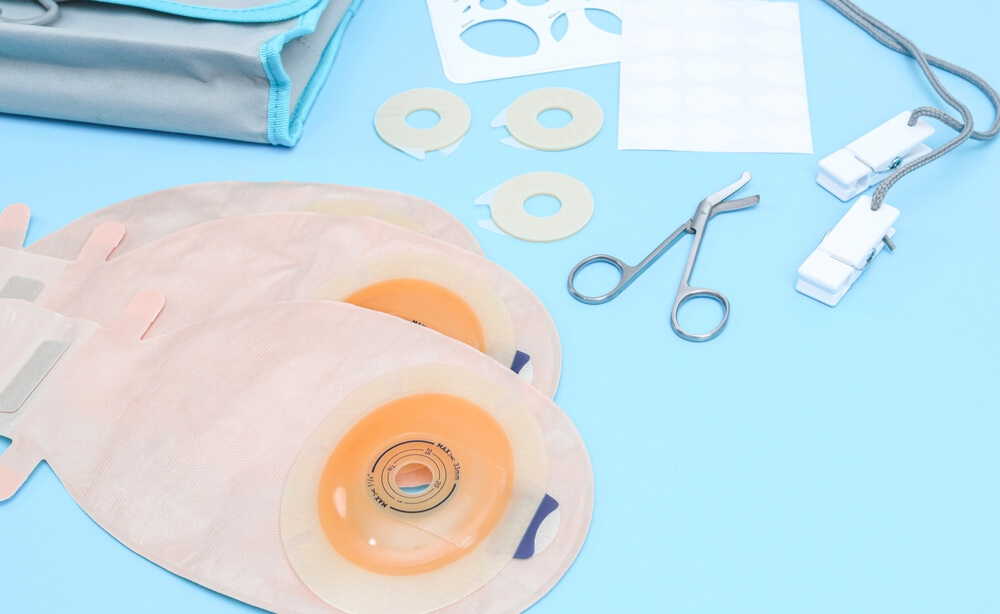Commencing a journey through the realm of oncological care often feels like learning an entirely different language. This new vocabulary is filled with numerous medical terms that carry enormous weight and significance. An understanding of these medical terminologies can not only alleviate anxiety but also enable individuals to become active drivers of their healthcare journey, humanize the often-robotic clinical environment, and facilitate effective communication between the patient and healthcare practitioners.
One such term that often surfaces in the dialogue around oncological care and gastrointestinal health is ‘Colostomy’. A colostomy, a term originating from Greek words, ‘kolon,’ meaning colon, and ‘stoma,’ meaning mouth, is a surgical procedure typically associated with colorectal cancer, diverticulitis, and other digestive diseases. It can be an intimidating term; however, with knowledge and understanding, it can soon become a fundamental part of one’s health literacy.
This concept can be demystified by breaking it down into simpler components and examining what it truly means, its different uses, and the impact it can have on a person’s life. This is most often done by medical professionals, such as Dr. Omar Rashid, who illuminate patients on the diverse facets of colostomy – from a detailed explanation of the procedure itself to exploring the significance of stoma care, the differences between a temporary colostomy and a permanent colostomy, and the potential complications associated with it.
Understanding Colostomy
In today’s article we will, aside from discussing the term colostomy, also go further to discuss life after the procedure, particularly focusing on aspects such as diet and lifestyle changes, and the growing importance of colostomy support groups in helping individuals navigate the emotional, physical, and social challenges that may arise post-surgery.
With the wealth of information available, it is easy to fall down the rabbit hole of medical jargon and feel overwhelmed in this complex landscape. However, by diving into what a ‘colostomy’ truly entails, shedding light on its implications, and discussing the practicalities, it becomes possible to add another layer of armor to an individual’s health consciousness journey. Together we will explore the intricacies of colostomy, with a view to bridging the gap between medical practice and patients’ understanding.
What Is a Colostomy?

In simple terms, a colostomy is a surgical operation that creates an artificial opening, known as a stoma, in the abdominal wall. The end of the colon or large intestine is brought out through this stoma, which provides an alternative route for feces to leave the body. As part of this operation, a colostomy bag is usually attached to the stoma to collect the waste.
If you are wondering what is a colostomy bag, in simple terms it is a medical device used to collect waste from the digestive system after a colostomy procedure.
The creation of the stoma aids in relieving complications associated with the lower bowels. When viewing it from a medical perspective, a colostomy is a life-saving procedure, forming part of the broader field of ostomy surgeries, which also include ileostomy and urostomy.
Despite the apparent physical changes it brings, a colostomy can positively impact a person’s quality of life. It empowers individuals with severe colon problems to lead a near-normal, productive, and fulfilling life. In the wider scope of oncological and surgical care, colostomy serves as an effective solution for combating debilitating gastrointestinal complications.
The purpose of a colostomy
A colostomy may become necessary when the lower part of the colon is unable to function correctly due to diseases or injuries. Conditions such as colorectal cancer, diverticulitis, inflammatory bowel disorders, or injuries to the colon or rectum can significantly impair the natural elimination of waste from the body. This is where a colostomy can prove vital.
By redirecting the flow of waste through an alternative route, the affected part of the colon gets to rest or recover. In some cases, the procedure helps to bypass the permanently damaged portion of the colon. The ultimate goal of a colostomy, therefore, revolves around enhancing the patient’s care and significantly improving the quality of life.
Different Types of Colostomy
There are various types of colostomy surgeries, and understanding the differences can be crucial. The specific type of colostomy an individual undergoes often depends on the reason for the surgery and the part of the colon that needs treatment.
- The first type, called the “end colostomy,” is usually performed after a lower colon or rectum removal. In this procedure, the leading end of the colon is redirected towards the stoma. Subsequently, a colostomy bag accommodates the body’s waste exiting through the new route.
- Another type is the “loop colostomy,” in which a loop from the top part of the colon is pulled out through the abdomen. Here, both ends of the loop are open, and one colostomy bag is usually sufficient for waste management.
- A “double-barrel colostomy,” yet another kind, involves creating two separate openings on the abdominal surface. The active section of the colon reroutes the waste, while the inactive part, linked with the lower colon and rectum, eliminates mucus.
All these types of colostomy surgeries have their unique set of attributes and challenges, making stoma care an integral part of the post-surgical regimen. Each patient’s lifestyle, disease condition, and preferred surgical intervention determine the type of colostomy performed.
What Does a Colostomy Procedure Involve?
There are different phases of the colostomy procedure, and below you can find all the necessary information.
Pre-operative preparation
The preparatory phase before a colostomy is critical as it sets the groundwork for the surgical procedure and the post-operative recovery phase. It typically includes pre-operative consultations with the surgeon and a stomal therapy nurse, medical evaluations to review the patient’s overall health status, dietary precautions, and required adjustments to various aspects of lifestyle.
The patient’s role in these preparatory measures is integral. At this stage, patients are often educated about the entire process, including what to expect during and after the surgery, how to adapt to living with a colostomy, and how to implement diligent stoma care. The goal is to foster patient empowerment and promote an active role in decision-making processes connected to their care.
The process may seem overwhelming initially, triggering an array of emotions in patients. But with mental preparation and acceptance, it becomes manageable. Hence, patient anticipations leaning towards a considerable life change are natural and expected.
The colostomy procedure
The actual process of a colostomy bag surgery varies depending on the type of colostomy performed. However, the framework typically includes the surgeon creating an opening (stoma) in the abdominal wall, bringing the healthy part of the colon through this opening and temporarily or permanently attaching it to the skin surface for waste excretion. In most cases, a colostomy bag is fitted over the stoma to collect the waste.
An operation’s specifics may differ between different types of colostomies. For instance, an end colostomy mainly involves operating the colon’s leading end, while a loop colostomy primarily concerns the colon’s upper part. Meanwhile, a substantial part of the colon is involved in a double-barrel colostomy, requiring two separations.
The surgery typically occurs under general anesthesia, ensuring patients are unconscious and pain-free during the procedure. The hospital stay can range from several days to a few weeks, depending largely on the nature of the surgery and individual recovery rates.
Post-operative care and recovery
Proper care of the stoma is vital as immediate post-operative care. It includes adopting adept stoma cleaning procedures, routinely changing the colostomy bag, and vigilantly monitoring for any signs of infection. Ostomy supplies such as specially designed bags, skin protective materials, and odor control products can become daily commodities in a person’s life post-surgery.
General recovery timelines can vary greatly, and while some individuals return to daily life and work within a few weeks, others may take several months. It is not uncommon for physical and emotional challenges to crop up. Adjusting to the colostomy bag, maintaining an adapted lifestyle, and coping with alterations in body image may pose initial hurdles.
However, equipping oneself with the right knowledge and resources can significantly alleviate these concerns. Factors that may contribute to a smoother recovery after a colostomy bag surgery include:
- a keen understanding of colostomy,
- essential stoma care education,
- constant communication with healthcare professionals,
- adherence to dietary guidelines,
- engagement in suitable physical activities,
- participation in colostomy support groups.
Should complications arise, prompt contact with healthcare providers is strongly advised to prevent issues from escalating.
Living with a Colostomy

Adjustments in daily life
Living with a colostomy involves adaptations that encompass various aspects of daily life, including diet, physical activities, and lifestyle habits. Nutritional changes often include a more balanced diet and consuming meals in small portions throughout the day to manage and control bowel movement. Regular physical activities become essential to promote overall health and prevent complications such as hernias and constipation. Daily routines include stoma care and colostomy bag changes.
Alongside these physical changes, we must address emotional and social wellness. Feelings of self-consciousness or worry about body image, leakage, odor, and noise are not uncommon. Such concerns might influence social behavior, self-image, and interpersonal relationships. Belonging to colostomy support groups can help individuals engage in open conversations, share experiences, and gain strength and reassurance from the shared stories of others in similar situations.
While these changes may appear overwhelming, with time and persistence, a new normal shapes up that facilitates leading a healthy life with a colostomy. Ultimately, it is important to remember that with proper care and management, people can continue to lead a fulfilling and active life post-colostomy.
Colostomy care and management
Proper stoma care significantly impacts a person’s quality of life after a colostomy. Rinse the skin with warm water during bag changes, protect the skin around the stoma with a barrier cream or ointment, regularly check for signs of infection, and know how and when to change the colostomy bag. Ostomy supply kits, including skin barriers, adhesive removers, deodorants, and drainable or closed pouch systems, are essential elements of proper stoma care.
Regular follow-ups with healthcare providers form another crucial facet of post-colostomy care and management. These visits are necessary to monitor healing, manage complications if they arise, review dietary preferences, evaluate emotional well-being, and assess lifestyle changes. Patient education and support from healthcare professionals during these follow-ups often act as strong pillars that support the physical and emotional health of individuals.
Potential complications and how to handle them
Like any other surgical procedures, colostomy can have potential complications. These complications may range from skin irritation due to stoma leakages, potential for infections, and abdominal pain to more severe ones like stoma blockage or hernias. The key lies in remaining vigilant, recognizing unusual symptoms early, and seeking medical help promptly.
You should seek immediate medical attention if you experience symptoms like
- severe abdominal pain,
- unusual stoma color changes,
- excessive bleeding from the stoma,
- prolonged diarrhea or constipation,
- signs of infection.
Living with a colostomy is a process of continual learning and adjustment. While the journey may seem challenging initially, with time, good education, ongoing support, and proper care, you can live fully and continue to enjoy your life. It is essential to remember that each individual’s experience varies. The aim is to equip yourself with the necessary knowledge and tools to navigate this journey with confidence and resilience.
Embracing Life Post-Colostomy
As we navigate through the complex yet enlightening labyrinth of what it means to undergo and live with a colostomy, a key revelation stands out – understanding and preparedness play pivotal roles. For individuals who might need a colostomy due to colorectal cancer, diverticulitis, or any other debilitating bowel complication, acquiring an in-depth understanding of the procedure, the necessary changes it brings along, and the steps for proper post-operative care is invaluable.
This understanding is not limited to the recipients of this surgery alone. Family members, friends, and caregivers also form part of this matrix of knowledge and understanding. Their support and assistance streamline the transition into a post-colostomy life and ensure that the needs are met and challenges addressed promptly. Hence, engaging in open dialogues about the colostomy, asking questions, and clarifying doubts becomes a collective responsibility that upholds patient care and quality of life.
When we open the conversation about living with a colostomy, the narrative often gravitates towards the adjustments and hurdles. However, what deserves equal – if not more – emphasis is the ability to lead a fulfilling life post-surgery. While changes in lifestyle are inevitable, they don’t equate with a stalled or compromised life.
Delving into the realms of diet changes, physical activities, ostomy supplies, stoma care, and colostomy bag changes, we discover new facets of existence that contribute to cultivating a ‘new normal’. Yes, it can be challenging, but the beauty of it lies in overcoming those challenges, evolving through the process, and coming out stronger and more resilient.
Joining colostomy support groups builds bridges of shared experiences and fosters a sense of community. Through such platforms, individuals can share their narratives, draw inspiration, draw comfort from familiar stories, and equip themselves with practical tips and techniques for efficient colostomy management.
Conclusion
In conclusion, a colostomy, temporary or permanent, does not put an end to one’s aspirations or dreams. You continue to engage in activities you love, travel, enjoy foods, work, and even swim. A colostomy isn’t a hurdle; it is just a detour, guiding you on a path where you continue to live, grow, and shine.
To help you overcome this detour, contact our professional staff and schedule your consultative session today. We are here for you!


